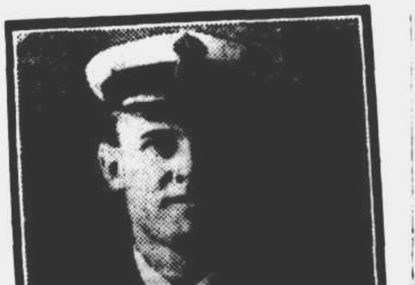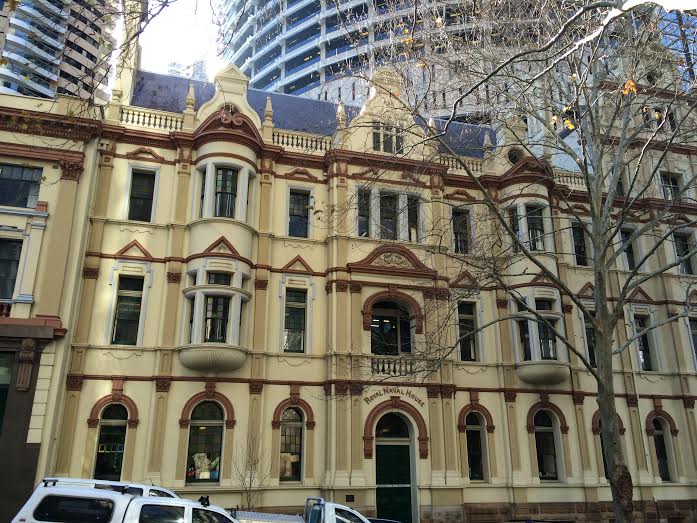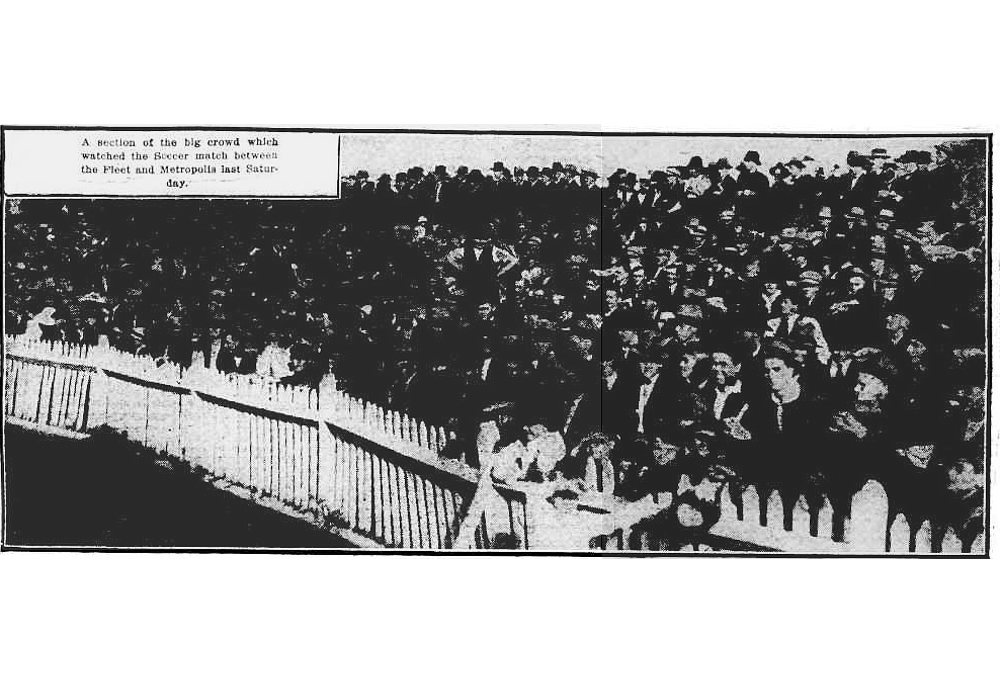Controversy as Villa keeper handed second yellow for shootout crowd taunting... but isn't sent off
Emi Martinez was saved by a new rule that resets yellow cards at the end of extra time, meaning his second yellow for taunting…

The Sydney Futures Exchange in Grosvenor Street is a place for high-fliers of the finance world. It’s also a building that saw an intriguing event in football’s past.
Back in 1903, the building went by a different name, Royal Naval House. It was the headquarters of the [British] Royal Navy’s Australia squadron and in the afternoon of May 20 an important meeting was taking place.
What grand strategy were these representatives of the most powerful Naval force in the southern hemisphere discussing? It was an invitation from the New South Wales Football Association to enter a team in the Sydney First Grade premiership.
 The current Sydney Futures Exchange building was the scene of an important football meeting (pic 70s Mo).
The current Sydney Futures Exchange building was the scene of an important football meeting (pic 70s Mo).
Some in that meeting wanted the ships to ‘stand alone’, while others favoured a united ‘whole of fleet’ approach. At the time the press had variously reported that they were out, they were in and then they were out again.
Perhaps as a sweetener to the ‘stand alone’ group, Alf Pick, the sports loving publican of the Duke of Cleveland hotel put up a trophy for a separate competition between ships’ crews. By the time the delegation from the NSW Football Association arrived the decision had been made. The Navy team was in!
The Navy team was the x-factor in the NSW Football Association’s grand new venture known as district football. It was thought that the Navy, with talented young footballers in its ranks, would not only be a competitive team but be a popular one as well.
On May 30 1903, The Navy or ‘Royal Navy’ as it was often called, ran out onto Wentworth Park for their first ever match against Ultimo. Behind 1-0 at halftime they drew level before eventually going down by the score of 4-1.
The Navy always had problems fielding a regular team, as ships would often sail on short notice. When the Navy finally won a game, it was an emphatic 6-1 belting of South Sydney at St. Peters. They had one other win that year, a 5-2 triumph over Balmain. They finished the season placed seventh in a nine-team competition.
The end of the 1903 season also saw the final stages of Alf Pick’s challenge cup for the ships’ crews. These matches were played on Thursday afternoons at Moore Park, just across the road from the Duke of Cleveland Hotel. The final resulted in a win to HMS Ringarooma against the boys from HMS Mildura. The match was played before a volatile crowd, the Sydney Sportsman reporting that the “feeling at times ran very high between the supporters of the opposing ships.”
Hopefully those feelings had died down when the spectators and players retired after the game to the Duke of Cleveland, known today as The Bat and Ball Hotel. When you look back at the old black and white photos of that era you assume it was a silent, black and white world. In reality I would suspect those post-match celebrations were as noisy as hell and everything including the vomit down the front of the sailors’ uniforms was in full glorious technicolour!
For the rest of the Federation period, the Navy was an ever-present force in the Sydney competitions. They were playing in the Second League when war broke out but were promoted to First League status in 1916 when some clubs could no longer field a team. In the lead up to the First World War the Navy also formed another team with a distinctly Australian flavour. This team was HMAS Tingira.
When the Royal Australian Navy was established in 1911 the Federal Government purchased a tall ship to be used as a training vessel for naval cadets. The ship, called HMAS Tingira, had started life in 1866 as the Sobraon, a clipper on the England to Australia route before being converted to a floating reformatory school for destitute boys, moored near Cockatoo Island in Sydney Harbour.
When it was then commissioned as the HMAS Tingira in April 1912 it was permanently moored in Rose Bay and cadets aged as young as 14 spent time aboard learning the seafaring craft while undergoing the harsh Naval discipline. In June that year the Tingira Soccer League was formed and by 1913, HMAS Tingira was playing in the Second League reserve division, with its home ground at Lyne Park, within sight of the ship.
The Navy’s run in top-flight football came to an end in 1920. The reason was that the ships would be on escort duties for the royal visit of Prince Edward. The Navy never fielded a senior team after that. The Prince, affectionately known as the ‘Digger Prince’ was a popular figure in Australia. As a king, things didn’t work out too well and he was forced to abdicate when it was revealed his American wife Wallis Simpson, was a divorcee.
The Navy’s last great football moment occurred during the 1924 cruise of the Royal Navy’s Special Service squadron. At every port the ships’ crews took on the locals in football.
 Navy vs Metropolis match at Wentworth Park in 1924 (1924, April 18). Arrow (Sydney, NSW : 1916 – 1933), p. 8. )
Navy vs Metropolis match at Wentworth Park in 1924 (1924, April 18). Arrow (Sydney, NSW : 1916 – 1933), p. 8. )
In April it was to be Sydney’s turn. Fittingly, Wentworth Park, the site of the Navy’s first competitive match, was the venue. A fine crowd of over 10,000 was on hand to watch the game including a vociferous barracking mob of sailors. The match, which resulted in a 4-2 victory to the Sydney team, was the only one the Navy side lost on the cruise.
So what happened to the Tingira boys? After the First World War, sports coverage of secondary competitions had all but dried up. However I did come across the following result in the Sunday Times of 28th June 1925. Just a scoreline that read: Bondi United 7 Tingira 0 in the Eastern Suburbs competition. So it appears that HMAS Tingira football club was still in it at the end.
That end came when the ship was decommissioned in 1927 and towed down the harbour to Berry’s Bay. She lay there at anchor for another 17 years before being broken up in 1942.
It’s always a pleasure to be out on the harbour, even if only on a humble Sydney ferry. Those dark green waters have many stories to tell. One of those is a football story.
This is the first of a two-part series on early football in Sydney. Look out for the second part next week.